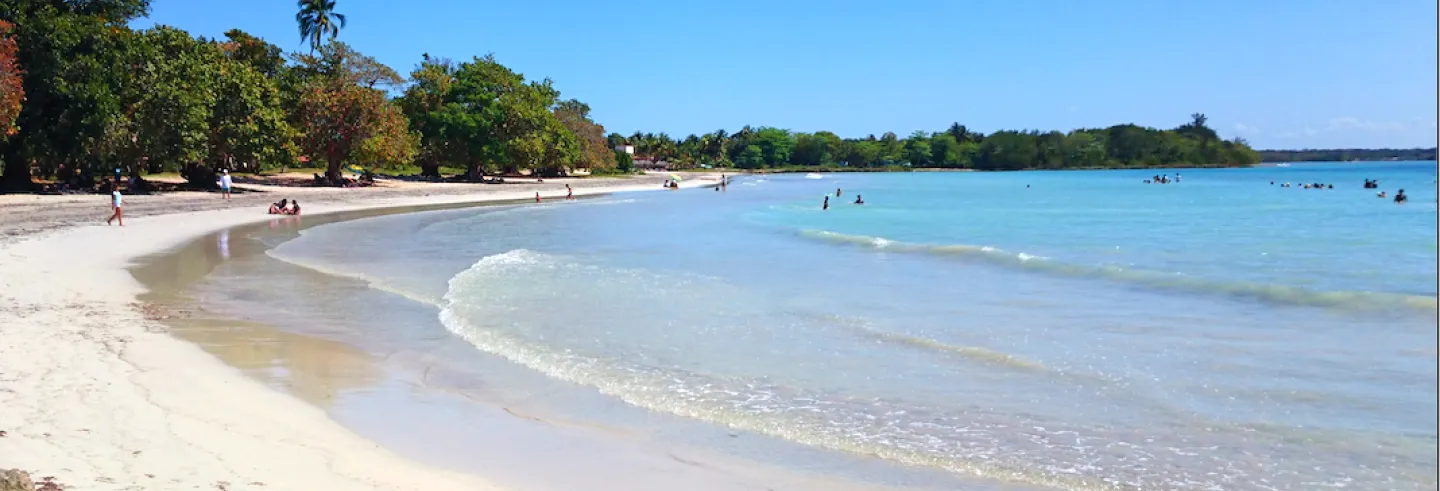In very early 1970, in my undergraduate thesis at Kyoto University, I quoted from ‘Che’ Guevara’s speech in Punta del Este, Uruguay, in August, 1961. It was, amongst other things, on trade imbalances between developing and industrial nations. Guevara was, then, president of the National Bank, as well as the Minister of Industries & Finance in the revolutionary government of Cuba.
Che Guevara was captured and murdered in the Bolivian jungles, by CIA-assisted operatives, on 9 October 1967; almost exactly 30 years later, on 17 October, 1997, Guevara’s remains were laid to rest in an imposing and impressive mausoleum, in the city of Santa Clara, in Cuba, with military honours (one of the final deeds of Fidel Castro’s presidency).
During my sojourn in Cuba earlier this year, I visited, on 4 March, 2019, the largely silent mausoleum. It exhibits many valuable memorabilia belonging to Che, its inner walls mounted with photographs and icons of his fellow combatants, recording his life, from childhood in Argentina, through revolutionary Cuba, in Africa and finally death in Bolivia.
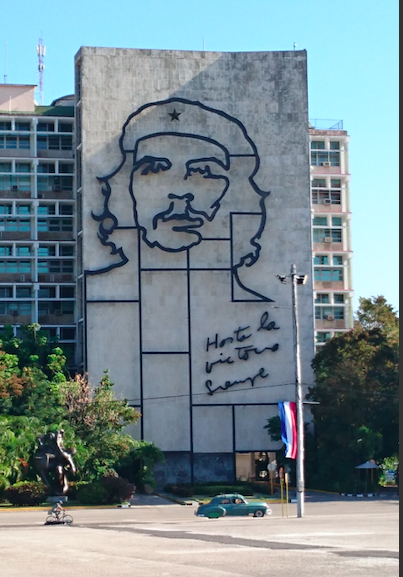
In 1970, from Lund in Sweden, I entered a Radio Havana competition, with an essay on the Cuban Revolution that overthrew the dictator and playboy, Fulgencio Battista. The winner(s) of the competition were to be awarded air fare to Cuba, to work in the sugar plantations to help in the harvesting to meet Fidel Castro’s target of 10 million metric tons of sugar
I wrote essays in 1970, 1971 & 1972, on variations on the theme of the Cuban Revolution of 1959, from a naïve leftist political economy perspective, but never succeeded in winning a prize – although I did obtain honourable mentions, each year (as prizes, was sent, by Radio Havana, photographs of the Granma ‘12’ and others – the Castro brothers, Guevara, Cienfuegos, Vilma Espin, Haydée Santamaría, Melba Hernández, Celia Sánchez, and so on).
My enthusiasm for the Cuban revolution, never dimmed 1Olof Palme, Prime Minister of Sweden, made a state visit to Cuba – the first by a western leader – in the summer of 1975; Mrs. Anna Greta Leijon, was a member of the Swedish delegation, led by Palme. She commented extremely favourably on Fidel Castro’s acute economic and institutional observations and questions ("How much milk does a cow in Sweden produce?"). This visit kept my personal interest in "Castro’s Cuba, Cuba’s Fide"l (the title of a book by Lockwood) alive. See also Pierre Schori’s "Minnet och Elden: En Politisk Memoar med Samtida Synpunkter" (Leopold Förlag, Stockholm, 2014), especially, chapter 5. – in fact, strengthened, especially in the face of varieties of US embargoes. Eventually, intellectual interests dominated my life. Finally, in February-March this year I was able to realise my dream of visiting Cuba, although many – not all - of the revolutionary heroes of yesteryear had passed away.
The Journey
The journey to Cuba, from Stockholm, via Helsinki, began on 25 February and ended on 9 March, 2019. The effective sojourn in Cuba lasted 11 days.
We saw and experienced much in the island of Cuba, and learned a great deal of the socioeconomic norms and political priorities that have driven it, in the face of hard embargoes by its giant neighbour, in spite of friendship and goodwill by many, near and far.
For at least two weeks before the trip, we had been listening to music by the Buena Vista Social Club and I had even equipped myself with an Ibrahim Ferrer (an illustrious member of the group) cap, for the journey. But queries about it were as enlightening as information about the whereabouts of the grave of Pablo Neruda in Santiago, Chile – further south!
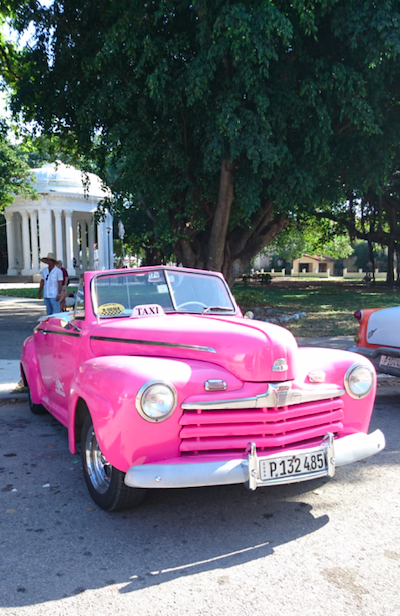
Instead, we were privileged to visit and taste the authentic famous Cuban rum, made by the Havana Club, in the old city. The premises we visited were also equipped with its own model factory, depicting the railway system that was built by the colonial powers, especially for transporting the rum to the various ports. A model, functioning railway system, added a touch of realism to it – and in the intricate building we could sample good, at least 20-year old, Havana Rum.
In the early morning of that day, Tuesday, 26 February, after changing Euros to convertible pesos – called CUCs 2(Cuban) Pesos and CUCs are the two official currencies in use in Cuba today; the (official)exchange rate is 1 € = ca. 30 Cuban Pesos & 1 € = ca. 1.35 Convertible Cuban Pesos (CUC) -- while walking in the streets of the old city of Havana, for nostalgic reasons, I bought a copy of the daily English newspaper, Granma, from a happy old woman.
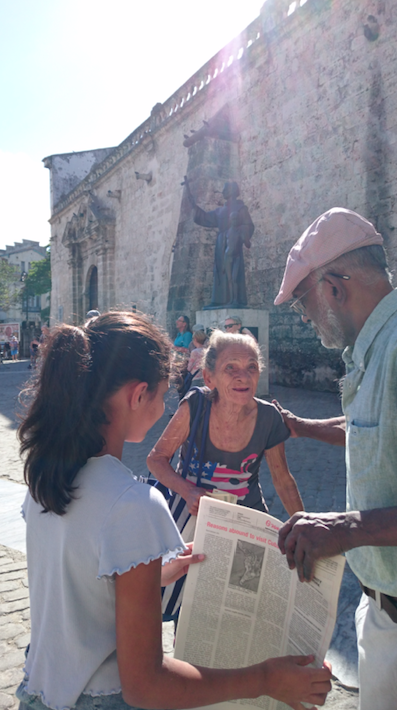
The owner-driver of a 1946, V8, Ford Deluxe Cabriolet (see photo), who drove my family, on 27 February, 2019, through the old city of Havana, kindly and elegantly, told me that there were about 20,000 vintage cars (not only American) in Cuba, today, & ca., 3,500 of them were in Havana. He added that it was with great difficulty that he repaired and maintained his vintage car in a drivable state.
We visited Hemingway’s home 3Of all the books by Hemingway – and I’ve owned and read many in first edition formats – the one I like most, unusually, is "Across the River and Into the Trees", especially the conversation, in chapter 3, between the Colonel and his driver, a Jackson, about Madonnas in the Uffizi or the Pitti (in Florence). in San Francisco de Paula, the Hotel Ambos Mundos in which he stayed, when in Havana, the fishing village in Cojimar, which was the backdrop for writing The Old Man & the Sea, and the restaurant La Terraza in that village, which he frequented, where Scandorama had arranged for us to have a delightful fish lunch; all this on Thursday, 28 February. The inner-walls of La Terraza were adorned with photographs of Hemingway at the restaurant and the adjoining beach, and with (a young) Fidel Castro, both smiling.
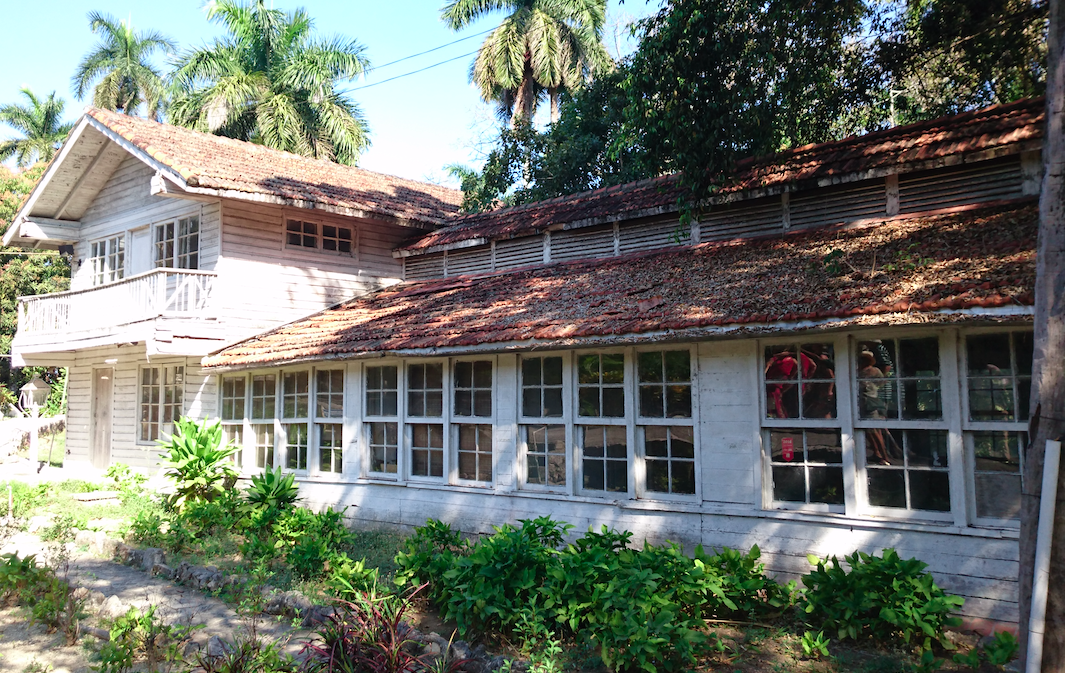
On Friday, 1 March, we had the chance to drive away towards Pinar del Rio, from the cities towards the rural landscapes, viewing also the huge murals, on natural rocks, of Gonzáles Morillos, commissioned by Fidel Castro.
We were – at least I was – happy to witness the ideal climate for the growth and harvests of the finest tobacco in Cuba (most likely in the world!); the growth of tobacco plants, the drying of the leaves from the ceilings of naturally warm cottages, and the rolling of them into the world famous cigars of Cuba, were all part of what I may call a cottage industry – for that, in fact, what it was. The finished cigars – and raw tobacco, was for sale in the small outlet, where I drank the finest coffee 4We were served coffee, even what the Cubans called espresso (which tasted very different from its Italian equivalent, but was very similar to the small cup made with a traditional Neopolitan, hand-held, ‘machine’) with a thin, small, stick of Cuban sugar cane (outside the city of Havana). It was exactly like being served coffee in old Ceylon, with a small piece of jaggery (which is also, largely, made of local sugar cane). In Sweden, I buy Sumatran coffee beans and machine-grind them at home, to make Moka coffee; in the many years in Italy, first in Fiesole, and then for 15 years in Trento, I bought Blue Mountain Jamaican and Cuban coffee beans, alternately, to hand-grind them at home. They were – are – political choices, like attitudes towards Salazar’s Portugal. Franco’s Spain and (various forms of) Apartheid! I have ever tasted in my entire sojourn in Cuba. In the sand and stone yard, chicken, hens and well-fattened cocks were running about, with some eggs, freshly laid, and still to be collected. I did not see any tractor, but a light-blue, vintage Chevrolet, was in a door-less, tin-roofed, garage.
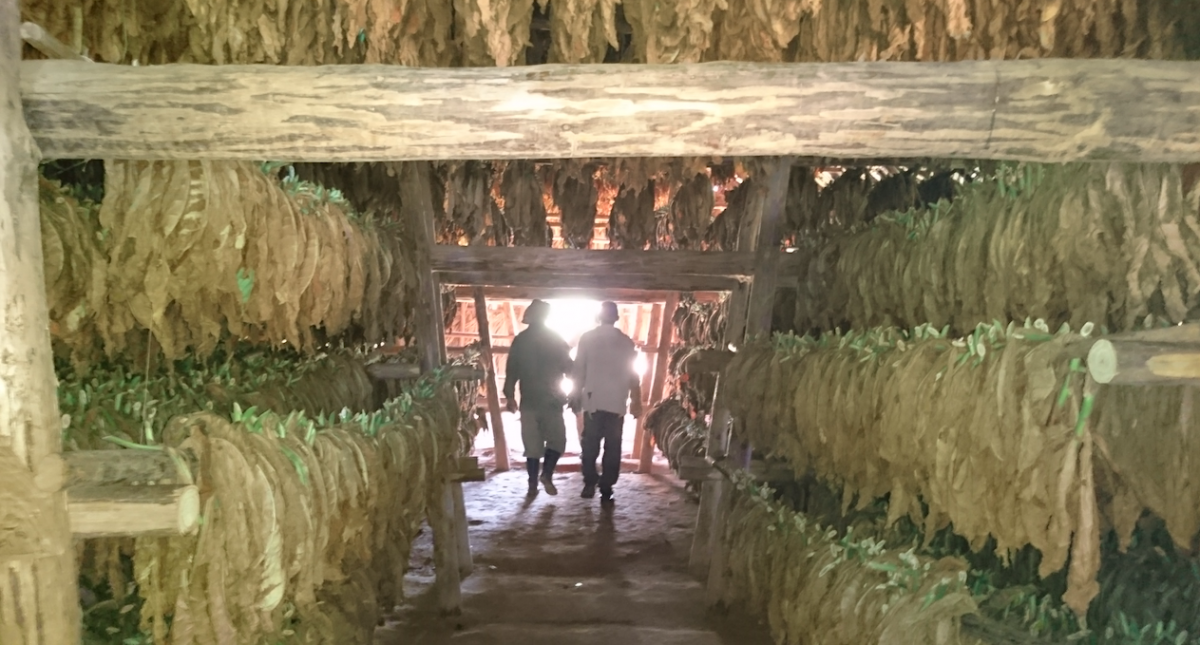
We headed, on Saturday, 2 March, to what has been called the “Pearl of the South”, the French city of beautiful Cienfuegos. At the city centre, there is the opera house, Teatro Tomas Terry, of which our Cuban guide, Antonio said:
It is alleged 5Antonio emphasised the word "alleged", with a twinkle of the eye, perhaps because he knew that the great Caruso performed only in Havana (and, that too, under "shady" circumstances)! that when the great tenor, Enrico Caruso, rendered one of his operatic performances here, even the glass-windows cracked!
However, at least for me, the high point of the trip, and a poignant one – especially outside Havana and its environs – was the visit to the (in)famous Bay of Pigs (also known, in Spanish, as the Invasión de Playa Girón or Invasión de Bahía de Cochinos). It was a failed CIA-sponsored military invasion of Cuba, planned during the Eisenhower presidential years, but implemented in the early months of US President John Kennedy’s tenure in April, 1961. The history is too well known for me to re-iterate even the high (and low) points of the failed effort, and the stupendous success of the Cuban armed forces under Fidel Castro. However, one point needs to be emphasised – a point that is little known to the intelligent laymen: the exchange of captured paramilitary counter-revolutionaries, by Cuba, for US promises of medical supplies; the promises by the US were fulfilled inadequately. Our Cuban guide, Antonio, mentioned this fact, but almost sotto voce, as if the bitterness felt by (most of) the Cubans was tempered by the inevitableness of the meaninglessness of promises in international trade negotiations!
Of this “failed invasion”, (see, Jon Lee Anderson, p. 509, in: Che Guevara : A Revolutionary Life, Grove Press, New York, 1997), Guevara, at Punta del Este, in August, 1961, sent a message to President Kennedy, through Richard N. Goodwin 6No relation of the distinguished Cambridge (both, Harvard & Cambridge, UK) economist, Richard M. Goodwin! 'N' stands for Naradof, in Richard N. Goodwin; the 'M', in Richard M. Goodwin, is for Murphey (with an ‘e’, as he tirelessly insisted to me). , who was at that time deputy assistant secretary of state for Inter-American Affairs, as follows (italics added):
Thanks for Playa Girón (Bay of Pigs). Before the invasion, the revolution was shaky. Now it's stronger than ever.
On a light-hearted note, we visited the colourful, cobbled-street, in the city centre of Triniad the next morning and quite promptly saw, and heard, the sublime music of the street band, the local Buena Vista Social Club! Mesmerised by their impromptu music – rather like Keith Jarrett’s modern jazz – we stood silently for many minutes and listened.
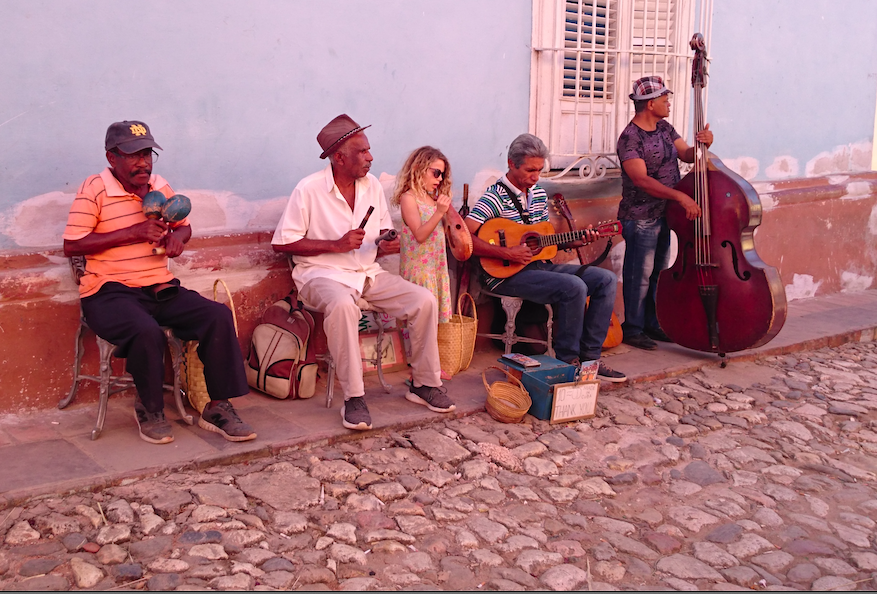
(Photo: Maria Johansson)
The colourful city centre reminded my wife and I of the (American or Native) Indian village of Cholula, in Mexico. There was also a well-attended, and architecturally impressive, church (one of many, dotted all over Cuba), which was holding a morning service (it was a Sunday, after all). It was then that I realised the extent to which religious freedom was compatible with the basic revolutionary zeal 7Pope John Paul II, the first Catholic pontiff to visit Cuba, was welcomed by Fidel Castro on 21 January 1998 (which was, of course, followed by Pope Francis’s visit to the island, in September, 2015, which was preceded, in May of that year, by Raul Castro’s visit to the Vatican). , determination and dedication with which the island was, almost wholly centrally, administered.
Whither Cuba – and its Revolution?8Somehow the tour by Scandorama did not organise a visit, in Havana to see the recently unveiled statue of the Colombian writer, and Nobel Prize winning novelist, Gabriel Garcia Marquez, whose personal friendship with Fidel Castro, and support for the Cuban Revolution, was as “permanent” as that of Alejo Carpentier. In fact, it is my personal opinion, that Marquez’s "The Story of a Shipwrecked Sailor" was even more influential – certainly on Fidel Castro – than Hemingway’s justly famous "The Old Man and the Sea". A part of this section is somewhat akin to Lisandro Pérez’s “Reflections on the Future of Cuba”, in Cuban Studies, vol. 39, pp. 85-91, 2008.
It is not edifying to try to predict the future – but I believe the revolution of 1959 will survive and strengthen the development of Cuban society. This is evident to the observant, sympathetic, naked eye – with construction activities all around, privatisation (albeit, rightfully, controlled), and so on.
All through our adventures and rich experiences in criss-crossing Cuba, our local guide, Antonio, gave us almost ceaseless commentaries on the social welfare system, and its impact on the population of the inhabitants of the island. The life expectancy, calorie intake, the educational and health system, the working life of the “average” population, the living conditions of the people – i.e., by implication, the housing of the people, both in the cities and in rural areas – and much else.
For example, Cuban life expectancy is almost 80 years – higher for women, than men – and infant mortality rate is 4.5 per live 1000 births. This, perhaps, reflects the fact that over 11% of (official) GDP is devoted to health care and a little under 1% of the population of Cuba are (locally) working physicians 9I have personal experience of the selfless nature of physicians in Havana. With the invaluable help of our local guide, Antonio, I was able to get, locally, the medical tablets aspirin (100 mg) and levaxine (100 mg, which had to be broken in half, to match my recommended dose of 50 mg., per day). They were, as in Sweden, officially, prescription tablets and the pharmacist wanted prescriptions from an official physician. This was provided me, by Dr. Rafael Peña Dorado, of the same clinic as the pharmacy, the Clinica Central, CIRA GARCIA. As for charges for the prescription, Dr. Dorado, whilst refusing to charge me, said (in perfect English): “Your health is more important for me than any charge!” .
That it resulted in a four-fold structure of the social fabric was evident: at the top tier, there were the administrative, state bureaucrats (more or less loyal to the tenets of the revolution); then there were members of the armed forces; next, those whose incomes (and wealth) were supplemented by remittances (by relatives or friends) abroad, and finally the ordinary worker (including pensioners and non-working, retired, person).
We were also informed, as a “matter of course”, of the lack of widespread internet availability - experienced by us, in all the comfortable hotels we stayed in, during the sojourn in Cuba (both in Havana and outside it). Internet facilities were available, in only the lobby of the various hotels, intermittently, by means of a card purchased for 1 CUC at the reception (we also "saw" many Cubans using mobile phones with enthusiasm). There was the natural desire of a large segment of the population to have access to the internet, more systematically– especially in learning and teaching at a higher education level. Somehow, correctly in my opinion, no one in Cuba (at least no one I met) emphasised the use of internet facilities for commercial purposes.
Cuban education, in the post-revolutionary period, is based on absolute priority for female participation and is compulsory from 6 till about 15 or 16, with primary (6 years) and secondary (divided into basic and technical/professional or pre-university) education almost equally emphasised. All students wear uniforms, with distinct colours signifying grade levels.
Pensions, various child and social benefits, retirement ages, etc., are also – in post-revolutionary Cuba – state determined, with emphasis on gender equality.
Cuban societal development remains a reflection of the priorities of the revolution of 1959. However, paradoxically, this has led to emphasis on the arts, music, stage, sports achievements and education, (controlled) literature, health systems, (basic) education, etc. Retirement and pension facilities, access to the natural amenities of Cuba (excellent, and uncrowded, beeches on the Atlantic and Caribbean shores), etc., are also emphasised in an equal sort of way. I admire and approve of them. However, science seems 10The word “seems” is very important here. My friend, Jayati Ghosh, when she read a first draft of this travelogue mentioned, among other things, that Cuban agronomic practices and medical research “have made remarkable strides in scientific” research – a judgement with which I wholly concur. to have suffered 11Donald Knuth, in his characteristically perceptive way, wrote (in the Foreword to "A =B", by Petkovešek, et, al., A K Peters, Wellesley, MA, p. ix): “Science is what we understand well enough to explain to a computer. Art is everything else we do.” The tours organized by Scandorama seems to reflect these priorities – in that we were not guided to see, and appreciate, the possible nascent industries; perhaps they don’t exist, even in nascent form! !
All in all, it was a pleasant, educative, but also relaxing, visit to a courageous and beautiful island.
(Our 12-day sojourn in Cuba, as members of a Scandorama tour group, was expertly guided by a Swede (resident part of the year in Havana), Mrs. Marie Agborg Askaner and a local Cuban, Mr. Antonio; they provided us with detailed & sympathetic, if not uncritical, comments, on local sites, customs, institutions, traditions, famous (and infamous) personalities – from (the) Castro(s) to Caruso, from Guevara to Hemingway, from Sotomayor to Juantorena, from Vilma Espin to Haydée Santamaría, and many others - and practices.)


